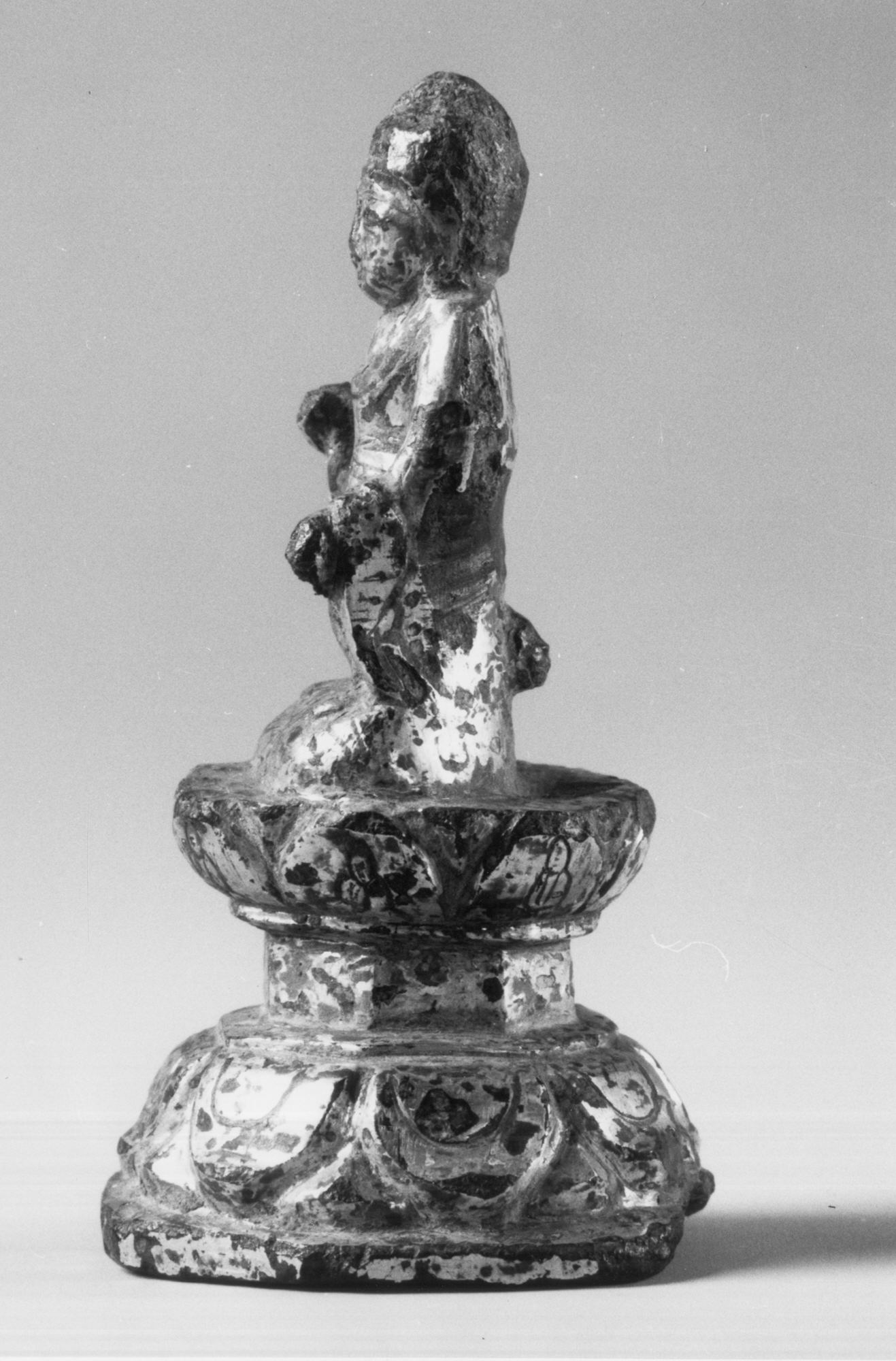Statuette of Buddha Sitting on Engraved Throne
Not on view
Legend has it that Buddhism was first introduced to Japan in 552 by a Korean king who sent "an image of [Shakyamuni] in gold and copper, several flags and umbrellas, and a number of volumes of sutras" along with a memorial lauding Buddhism as "amongst all doctrines the most excellent...Every prayer is fulfilled and naught is wanting" (Nihon Shoki, trans. W.G. Ashton, vol. 29, sects. 33–35). This legend may or may not be based on an actual historical event; nevertheless, the early Yamato and Nara states of Japan did have a flourishing trade with Korea and the Asian continent, which continued until the end of the Chinese Tang dynasty in the ninth century. Artisans, monks and diplomatic missions brought a rich array of fascinating objects both religious and secular, to Japan. In the early years of Japanese Buddhism, the faith was largely patronized by the ruling clan, which set up a centralized government modeled on the Tang. Their capital, the city of Nara, consciously emulated the Chinese capital of Chang'an. Temples and images were a symbol of the power and splendor of the court, a tangible display of the mandate to rule. Guilds of artisans, called be, many of whom were Korean, provided the technical and artistic means for the massive projects commissioned by the Nara emperors and empresses, rendered in gold, bronze, brocades, lacquer and wood.
The thin drapery and body-revealing lines of this two Buddha statue hint at the sinuous and elegant aesthetic of Tang China, standard-bearer of the East Asian cultural sphere at the time. Small images like these were common in both Korea and Japan where they were often placed, along with relics of the Buddha (shari, or saria in Sanskrit), in stone pagodas within temple precincts. The cult of Amitabha was also a prevalent image in Japan, the Pure Land zeal only took hold in the Japanese court later, in the eleventh century.
Due to rights restrictions, this image cannot be enlarged, viewed at full screen, or downloaded.
This artwork is meant to be viewed from right to left. Scroll left to view more.



